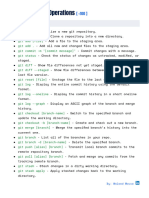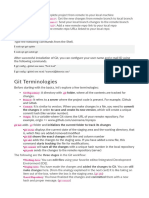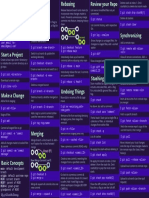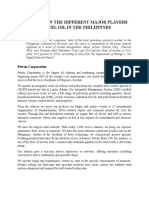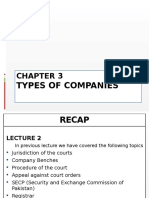0% found this document useful (0 votes)
27 views15 pagesGit Commands Cheatsheet & Practical Guide
This document serves as a comprehensive guide to mastering Git, detailing essential commands and real-world scenarios for effective version control. It covers topics such as setup, branching, merging, and collaboration, along with best practices for a professional workflow. The guide aims to equip developers of all experience levels with the knowledge to utilize Git effectively in their projects.
Uploaded by
itsme770011Copyright
© © All Rights Reserved
We take content rights seriously. If you suspect this is your content, claim it here.
Available Formats
Download as PDF, TXT or read online on Scribd
0% found this document useful (0 votes)
27 views15 pagesGit Commands Cheatsheet & Practical Guide
This document serves as a comprehensive guide to mastering Git, detailing essential commands and real-world scenarios for effective version control. It covers topics such as setup, branching, merging, and collaboration, along with best practices for a professional workflow. The guide aims to equip developers of all experience levels with the knowledge to utilize Git effectively in their projects.
Uploaded by
itsme770011Copyright
© © All Rights Reserved
We take content rights seriously. If you suspect this is your content, claim it here.
Available Formats
Download as PDF, TXT or read online on Scribd
/ 15









